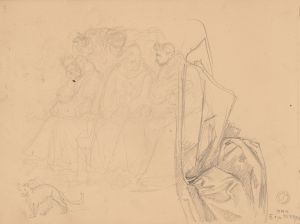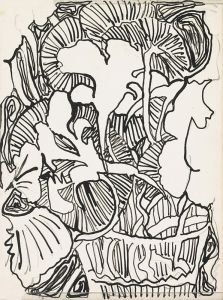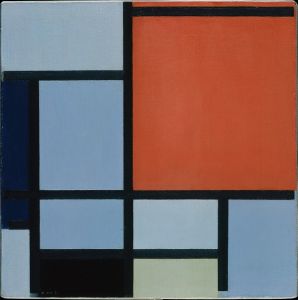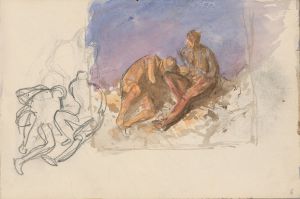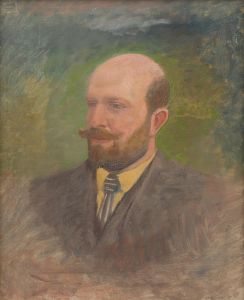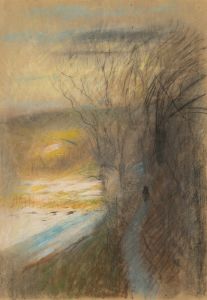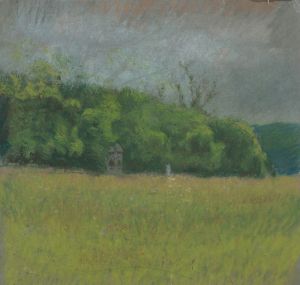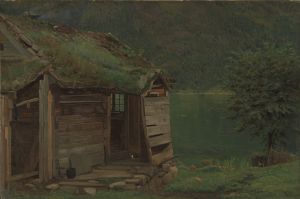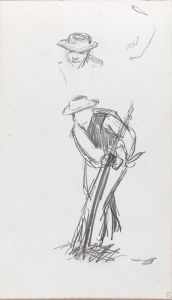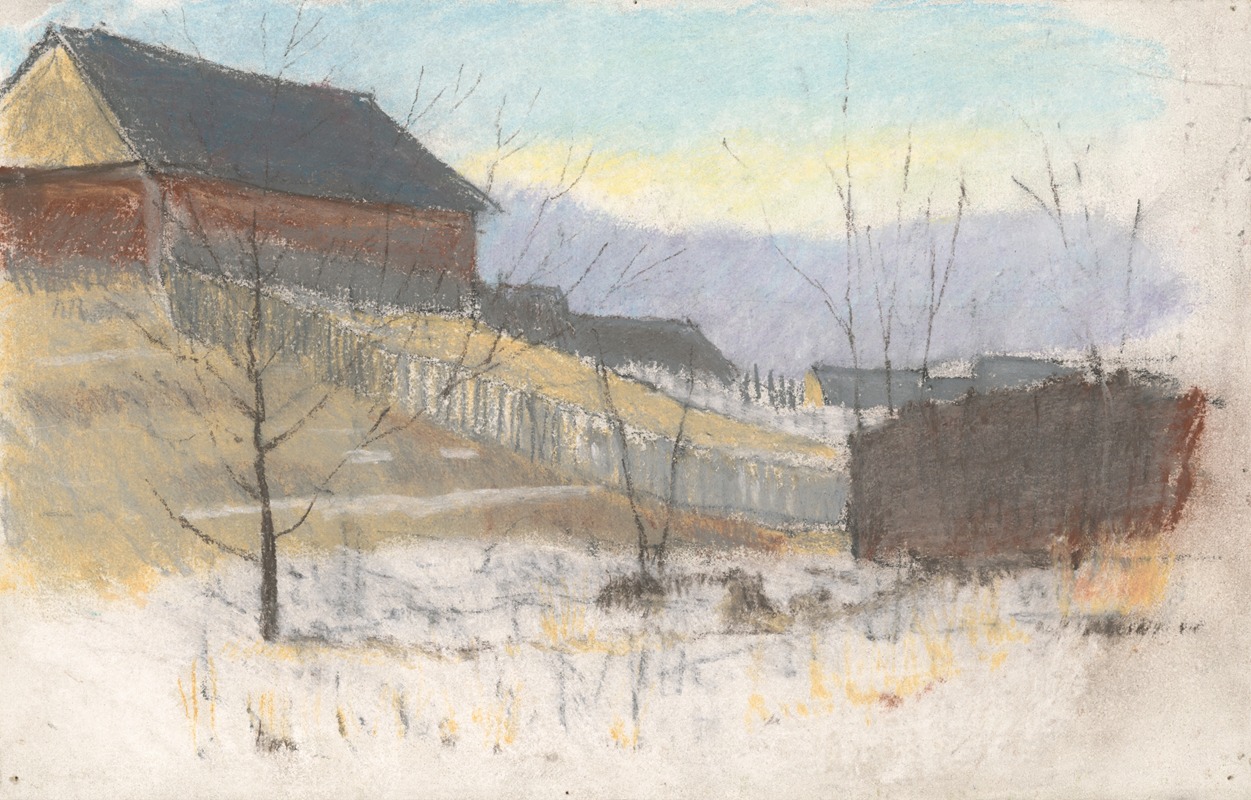
Na kraji dediny
A hand-painted replica of Ladislav Mednyánszky’s masterpiece Na kraji dediny, meticulously crafted by professional artists to capture the true essence of the original. Each piece is created with museum-quality canvas and rare mineral pigments, carefully painted by experienced artists with delicate brushstrokes and rich, layered colors to perfectly recreate the texture of the original artwork. Unlike machine-printed reproductions, this hand-painted version brings the painting to life, infused with the artist’s emotions and skill in every stroke. Whether for personal collection or home decoration, it instantly elevates the artistic atmosphere of any space.
Ladislav Mednyánszky, a prominent figure in the realm of Hungarian-Slovak painting, is celebrated for his evocative landscapes and poignant depictions of rural life. One of his notable works, "Na kraji dediny" (translated as "At the Edge of the Village"), exemplifies his mastery in capturing the essence of the natural world and the subtleties of human existence within it. Mednyánszky was born on April 23, 1852, in Beckov, which is now part of Slovakia, and he spent much of his life exploring the interplay between nature and humanity through his art.
"Na kraji dediny" is a testament to Mednyánszky's ability to convey mood and atmosphere through his use of color and composition. The painting typically features a rural scene, often with a focus on the transitional space between the village and the surrounding landscape. This theme of transition and boundary is a recurring motif in Mednyánszky's work, reflecting his interest in the liminal spaces that define human experience.
Mednyánszky's style is often associated with Impressionism, although he developed a unique approach that also incorporated elements of Symbolism and Realism. His brushwork is characterized by a loose, expressive quality that captures the fleeting effects of light and weather, imbuing his landscapes with a sense of immediacy and emotion. In "Na kraji dediny," this technique is evident in the way he renders the sky and the earth, creating a dynamic interplay between the two that draws the viewer into the scene.
The artist's choice of subject matter often reflects his deep empathy for the marginalized and the overlooked. In many of his works, including "Na kraji dediny," Mednyánszky portrays the lives of peasants and the rural poor with dignity and respect. His paintings serve as a visual narrative of the social conditions of his time, offering insight into the daily lives and struggles of those who lived on the fringes of society.
Mednyánszky's personal life was as complex and layered as his paintings. He was born into an aristocratic family, yet he chose to live a life that was often at odds with his social standing. He traveled extensively throughout Europe, drawing inspiration from the diverse landscapes and cultures he encountered. Despite his noble birth, Mednyánszky was known for his humility and his commitment to capturing the beauty and hardship of the world around him.
Throughout his career, Mednyánszky remained dedicated to his artistic vision, even as he faced personal and professional challenges. His work was not always widely recognized during his lifetime, but he continued to paint with passion and conviction. Today, his paintings are celebrated for their emotional depth and technical skill, and "Na kraji dediny" is regarded as a significant example of his contribution to the art world.
Ladislav Mednyánszky passed away on April 17, 1919, in Vienna, leaving behind a rich legacy of art that continues to inspire and resonate with audiences. His work, including "Na kraji dediny," is housed in various collections and museums, where it is appreciated for its ability to transcend time and place, offering a window into the soul of the artist and the world he so vividly depicted.





